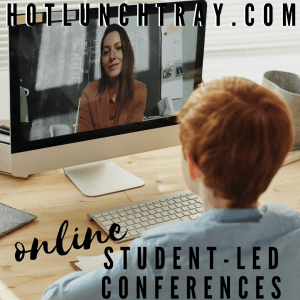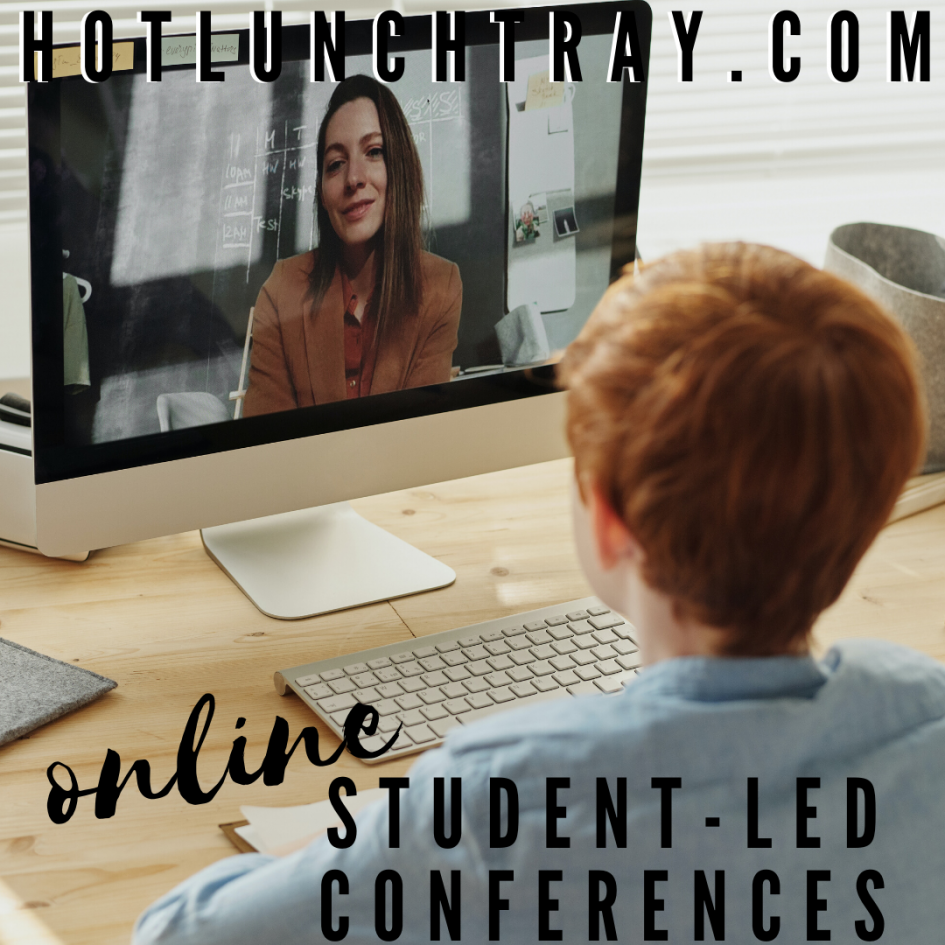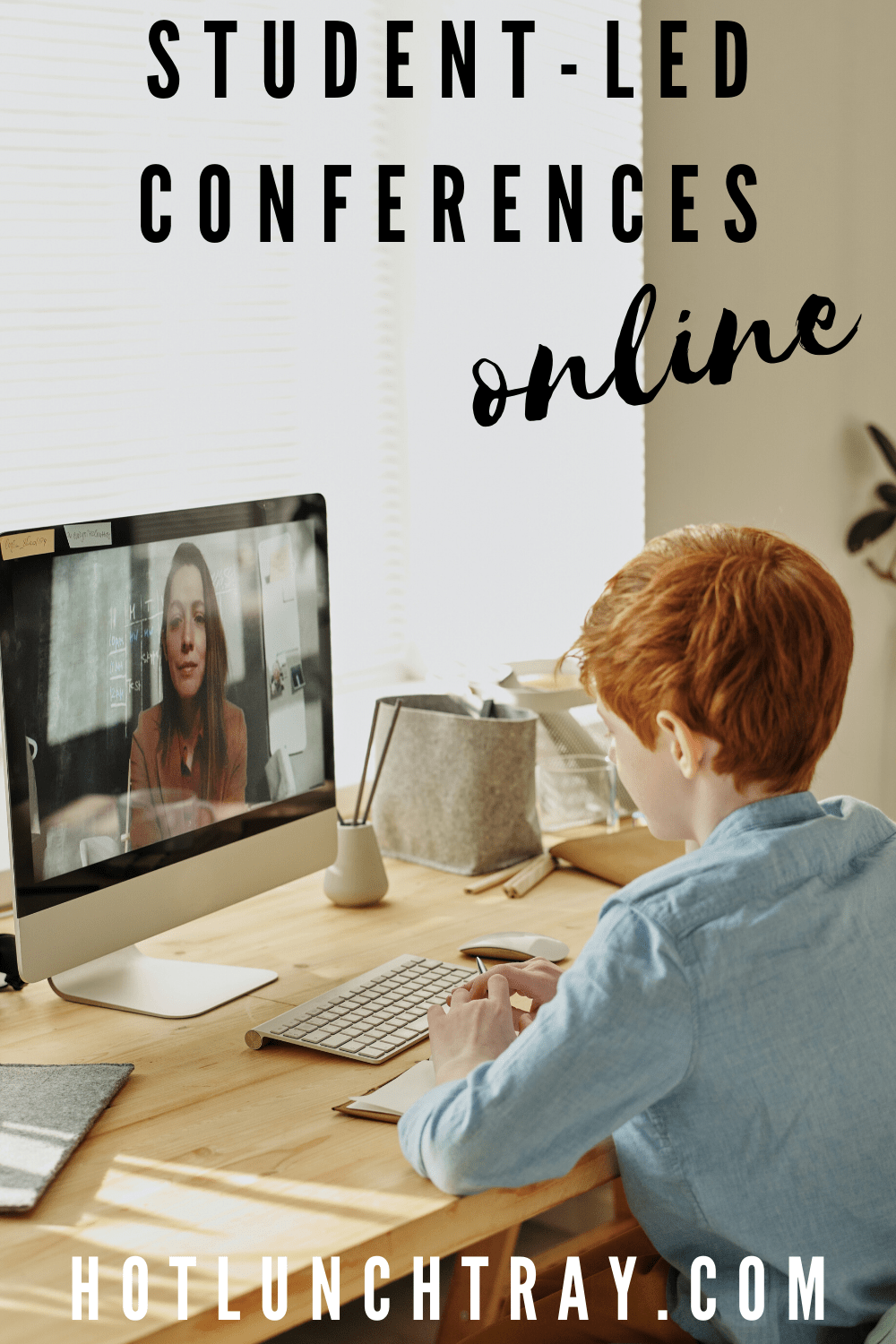Teachers need new perspectives on traditional tasks. After the last quarter of the 2019-2020 school year went online, every K-12 function must consider what it looks like online. Certain traditional tasks may even be enhanced by taking them online, such as conferences. In particular student-led conferences (SLCs) are a highly engaging way to share with families how students are doing in school – online or face-to-face. SLCs are not grade-specific, the idea for students to engage with the idea of their learning as a process that they are part of is universal at any grade level (McCarthy, 2015).
The traditional SLC is a three-part process: in-class preparation, the student-led conference (including goal setting), and evaluation of the process, in-class (McCarthy, 2015). To take the SLC online I suggest some easy adjustments. The older the student the less I would prepare and we would prepare together; the younger the student the more I prepared and offered strategic choices. Every nine weeks we would build an SLC portfolio. If it was the first nine weeks we would start from search and if it was later in the year we would revise and update our prior SLC portfolios.

Preparation
Student’s portfolios look at the nine-week time period and asked the student to select categories of work to highlight. Those categories I suggest to the students:
- skill/standard where I have shown improvement
- skill/standard where I am still working toward mastery
- something of which I am particularly proud
Guide students through past work searching for artifacts. Traditional paper-based work can be kept in a class binder to organize lessons, assignments, quizzes, vocabulary which fit each category; easily this could be a tour of online content. I would dedicate 2 days at the start of the school year and one day per SLC after that to prepare.
For traditional, face-to-face SLCs use 1/3 strips of regular-sized notebook for paper for them to explain what their selection was, why they chose it, and anticipate one question their parents might have. The younger the student, the more checkboxes and pictures the teacher may want to include on the paper which they stapled onto their portfolio item. Online versions of the prompts and the student explanation can be housed in many formats ranging from pieced together digital resources to finished portfolio products such as Portfolium.
When I had 4th – 7th graders, the first two times we prepare, we also talked about how to introduce adults, modeled shaking hands, and how to offer your parents a seat after arriving. This would be appreciated to talk about online etiquette with an online SLC. We role-played the transitions until students felt comfortable. I went through how to set goals with parents, we came up with several common goals and talked about how to select measurable, attainable goals.
Student-led Conference
Traditionally, a handout is provided to the student, to remind them of the required items during their SLC. A developmentally appropriate checklist or menu for younger or a bullet list for older students helps students stay focused. In the classroom, the portfolio is coupled with various activities around the room: working a problem on the whiteboard, reciting math facts – period table (grade dependent), and a reading by students for parents to listen to fluency. The tour-of-the-room items allow the parents to offer immediate help, norm what they see/hear other students doing to what their student is doing, and be comforted that their child is able to perform the basics after talking through more aspirational academic ideas.
I taped SMART goal settings strategies and examples to every seating group and circulated when I noted a group setting goals. If parents tried to engage me I became very good at turning the conversation back to the student and offered that we could always conference later if needed. I required parents and students to sign the agreed-upon goals. I only assessed that they were complete, never evaluated the goal. As an online SLC these goals could be pre-work for an SLC or post-work to expedite the process.
While the traditional classroom could hold many families at once, web conferencing tools such a Zoom also offer breakout rooms to allow for more private conversations and the teacher can drop in on them to mimic the many at once advantage SLCs offer. Online ideas for demonstrations would be for the student to “teach” a lesson of the students choosing in different subjects or units of study. Recordings of prior reading fluency may show the growth over time and be positive for almost any student. And the project of building a multimedia presentation may be an excellent
Evaluation
In a face-to-face setting I kept portfolios accessible, but in a separate crate for reference between SLCs or for when we were ready to set goals again. When online, access remains and is hopefully developed over the years. When we were back in class after all SLCs were completed we evaluated our performance, manners, transitions, our portfolios, goals, and filed our portfolios. The process was always more about empowering students to watch themselves grow, help their parents to acknowledge the strengths their students were constantly acquiring, and document/celebrate the process. That same debrief would be a very meaningful meeting or series of meetings online with students.
The SLC process works with multiple grade levels and would be effective metacognition. Hopefully, this is a good project to do with remote learning or future blended learning opportunities. Modification of the existing face-to-face process and more guidance would be required, but it is a joyful process.
References
McCarthy, R. (2015, November). Student-led conferences: Empowering students as active participants in the learning process. Australian Journal of Middle Schooling, 15(2), 66-71.







1 Pingback